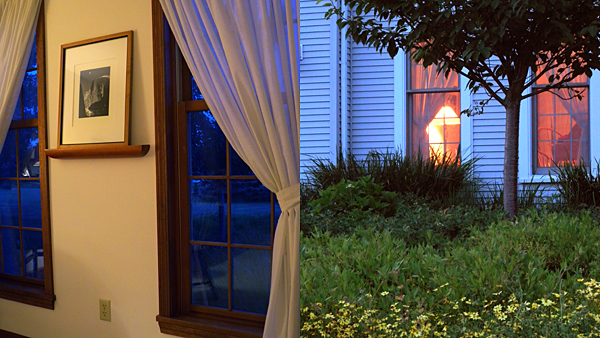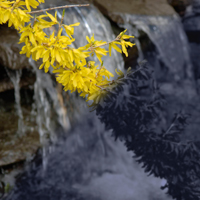Why Can I See Well Outside When My Mom (Who's Inside) Thinks It's Too Dark to be Out?
Adaptation! It all comes down to how our visual systems adapt to their environment. We are normally interested in identifying objects in our environment and less interested in identifying the color and level of illumination. Imagine a white piece of paper. When we view it on a bright sunny day, it looks white. When we view it at dusk after the sun has set, it looks white. When we view it under the very yellowish illumination produced by incandescent light bulbs (or the even more yellow illumination of a candle), it still appears white. This is because our visual system has adapted to the prevailing levels and colors of illumination in order to be able to better judge the relative colors of objects in our world.
When your mother is inside at dusk, she has probably turned on some lights and gradually adapted to that level of illumination. As it gets darker outside, she does not adapt to that change and when she glances out she notices that it appears very dark outside and calls her children in. The children, on the other hand, have been outside the entire time and adapted to the gradual change in the color and amount of light. The world outside still looks completely normal to them and they can still see fine when their mother seems to arbitrarily decide that it is too dark to be out. This change in appearance due to adaptation is illustrated in the images above.
Adaptation is a very powerful property of our visual system (and other perceptual systems) that allows us to easily detect changes in the world around us. For example, if you eat some sugar you will adapt to sweetness and when you taste some plain water it might seem bitter or sour. When you are very hot, a cool glass of water might feel very cold, but if you just came inside on a cold winter's day, that same glass of water might feel warm. If you spend time in a room full of tobacco smoke, you will gradually adjust to the smell and it won't seem as bad is it would if you walked into the same room from the fresh air outside. If you are in a room full of loud noises, then you can't hear a quite voice while if you are in a perfectly silent room, you can hear almost anything. These are all examples of adaptation and our visual system is very capable of adapting to changes in color and light level as well.
![]()
Explore the NEXT TOPIC at this level.
Explore the NEXT LEVEL on this topic.
Ever wonder ... How is color perception different from hearing?
Updated: Apr. 19, 2011

